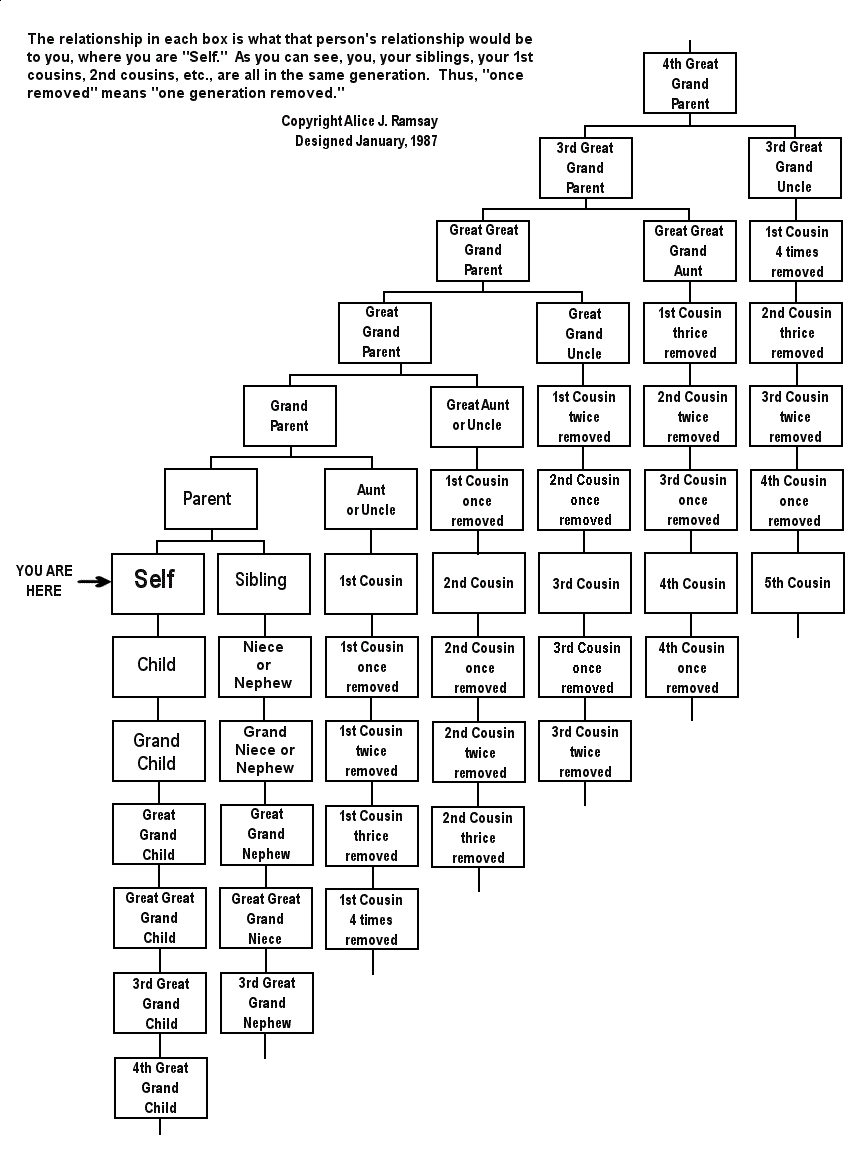As Thanksgiving in the United States rolls around again next Thursday, I think about a photograph of my mother actively trying to explain the relationships of our family.
Are we first cousins? Seconds cousins? First cousins once removed? Eighth cousins thirty times removed?
OK. So NOT that last one.
Without knowing it, growing up I was getting some genealogy 101 lessons: how are we all related?
As Thanksgiving is coming up for those of us in the United States, people will be circling around the table and swapping stories and, perhaps, even asking questions about those who came before. Today I want to share with you how to figure out how you may be related to someone.
First, I thought I’d share this handy-dandy chart designed by Alice J. Ramsey in 1987 explaining how you can figure out relationships so you have a visual. It’s at the bottom here :)
So, what does a “cousin once removed” or “cousin twice removed” mean?
Well, no matter what age, whether you are a first cousin, second cousin, third cousin, etc. this means you are within the same generation. The “removed” bit has to do with how many generations apart you are to that individual.
Using the chart below, I can see that my dad’s first cousin’s children are my second cousins. Their children would be my second cousins once removed. And their children? Well, they would be my second cousins twice removed!
Here’s a few more examples (use the chart if you need to follow along):
I would spend Thanksgiving with my dad’s first cousin, D, and her family. D is my first cousin, once removed. Why “once removed”? This is because this one generational difference equals “once removed.” D’s children then become my second cousins. Why second cousin? This is because we are considered to be in the next, but same generation, sharing the same great-grandparents.
We also have to remember that the “cousins x times removed” doesn’t have anything to do with age, but only with your generational relationship.
So, for example, doing my own genealogical work, I met my third cousin, Laurie. While she is almost 30 years older than me, we are considered the same generation, sharing the same great-great grandparents (see the chart above). Her children, while they are close to my age, are my third cousins once removed. Why? Because her children and I have a one generational difference between us. And my third cousin once removed, what about their children in relationship to me? They would be my third cousins twice removed. Why? Because there is a two generation difference between us.
I love explaining how people are related to one another. Because while we may not be all directly related, we are all connected in some way :)
If you have any questions or you have any ah-ha’s, comment below! I can help you to figure out how you are related or celebrate with you.
